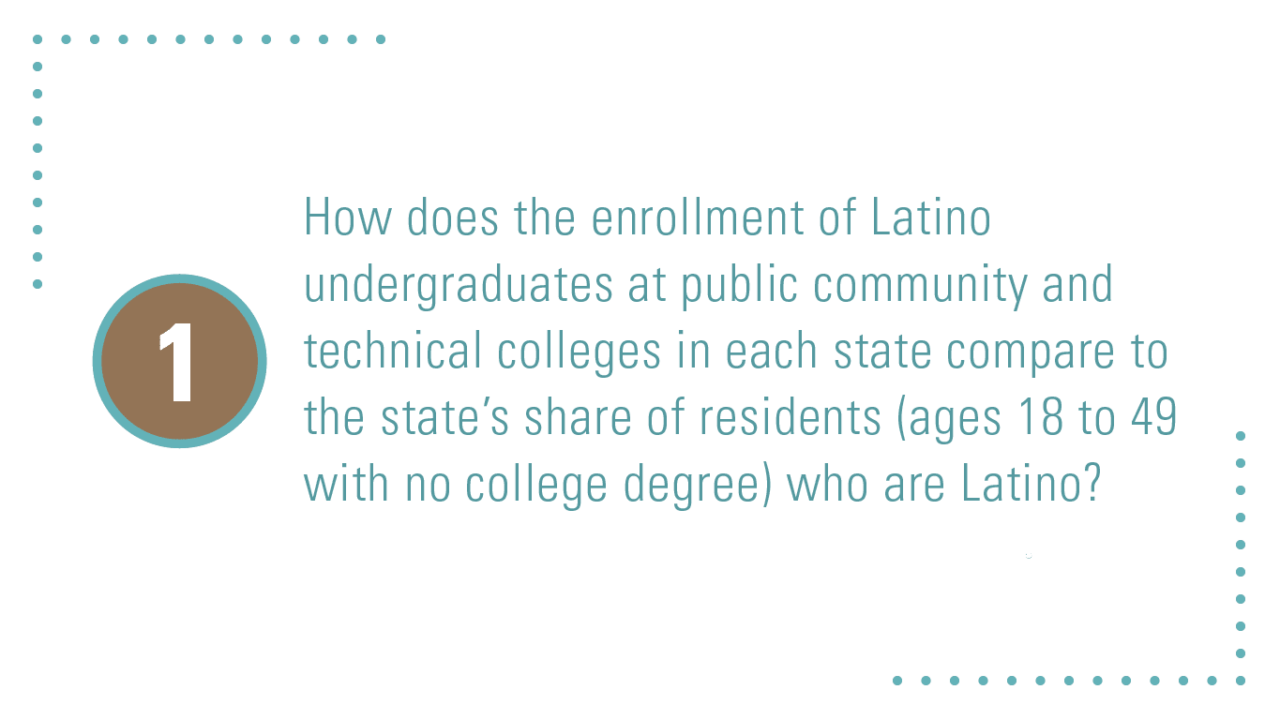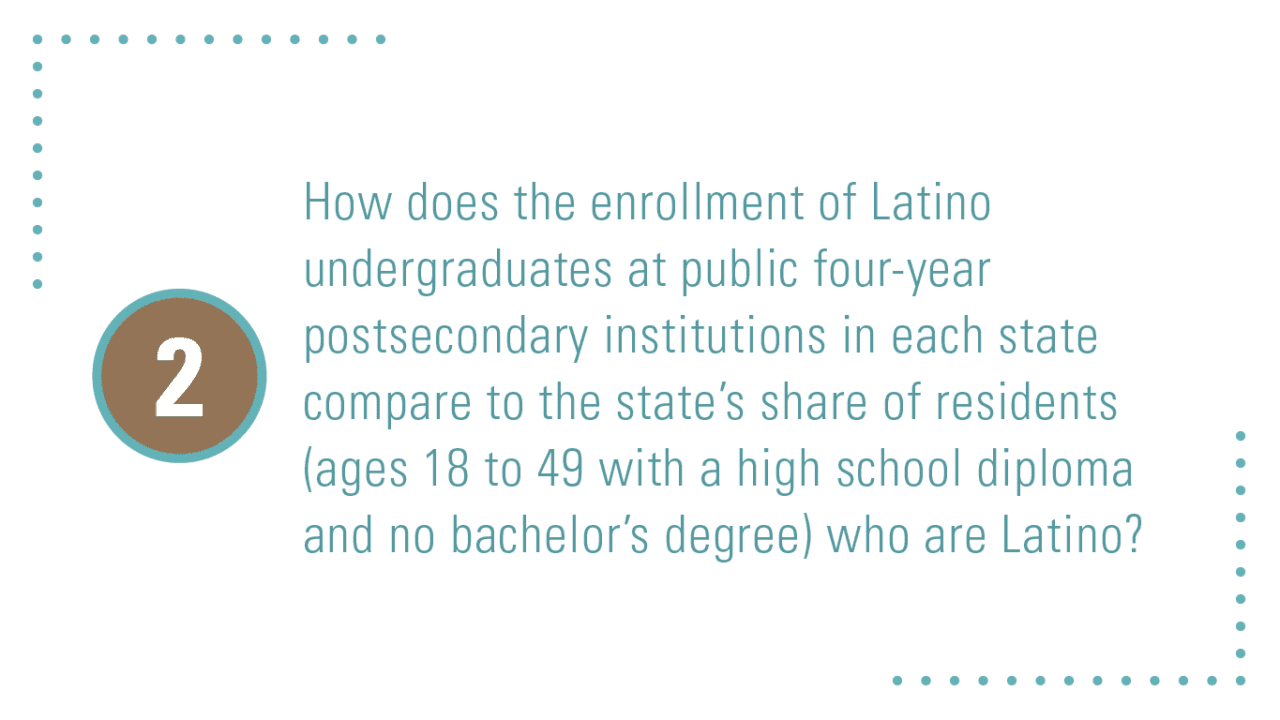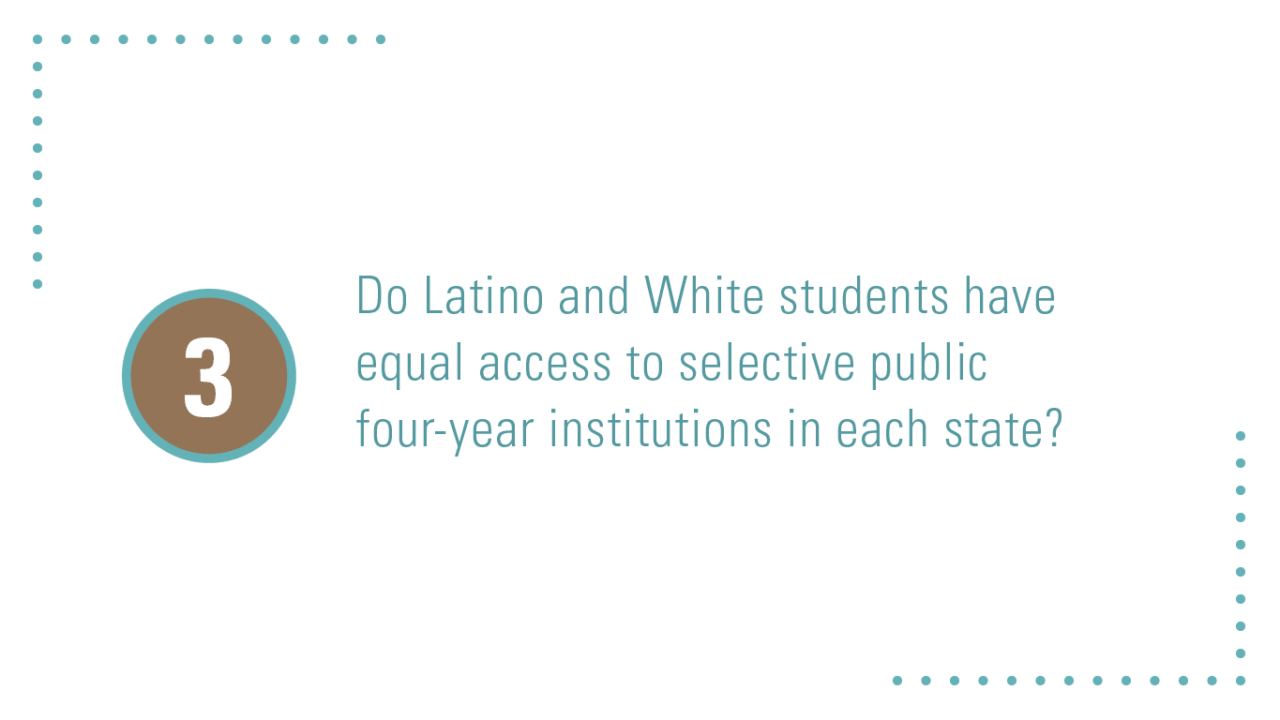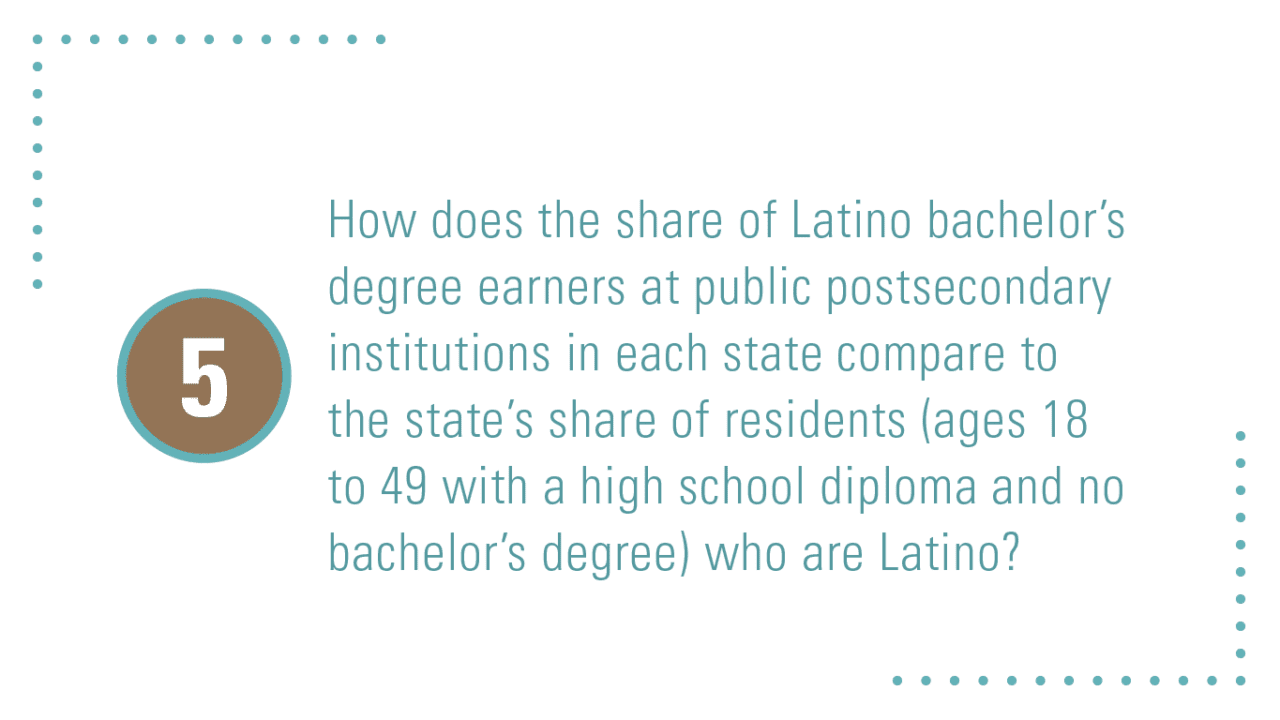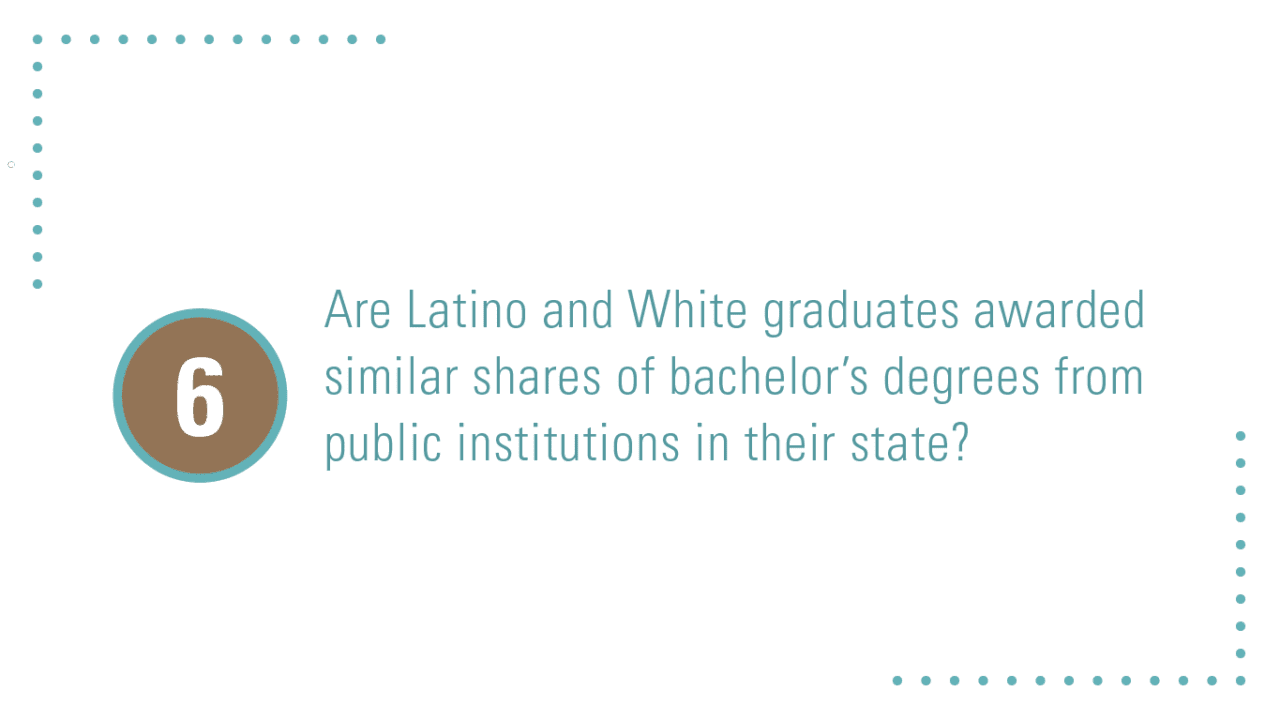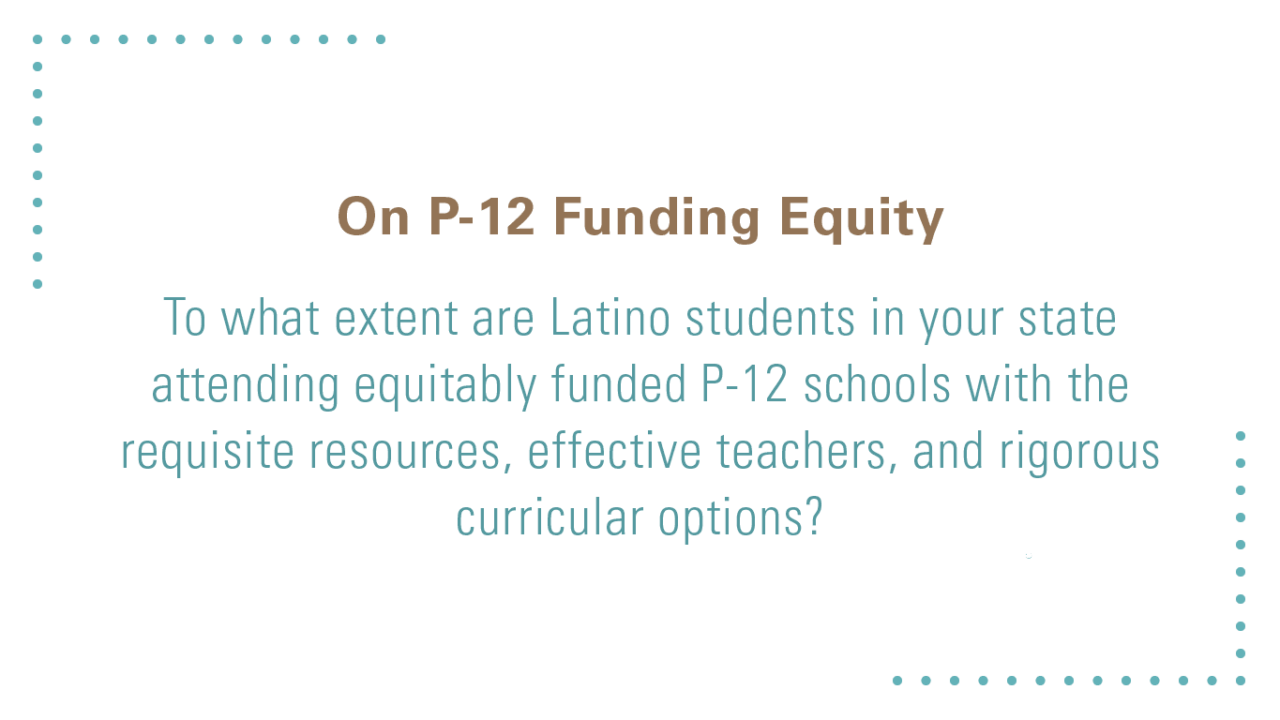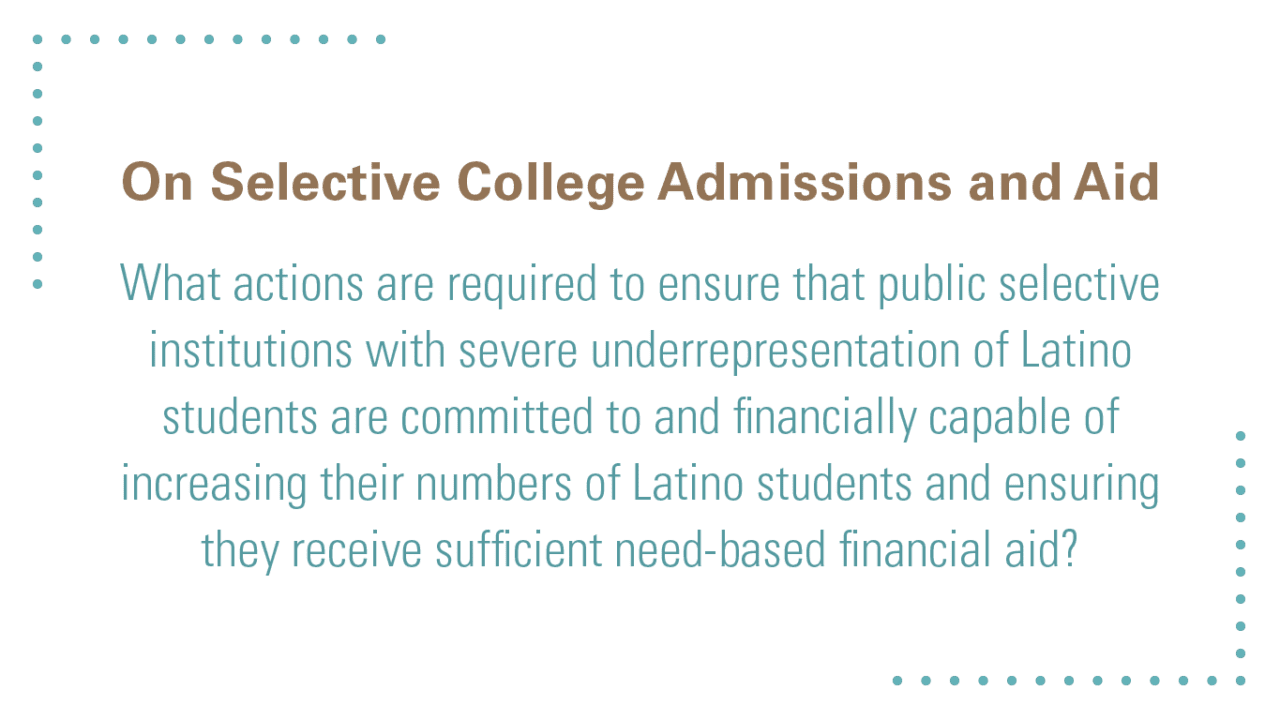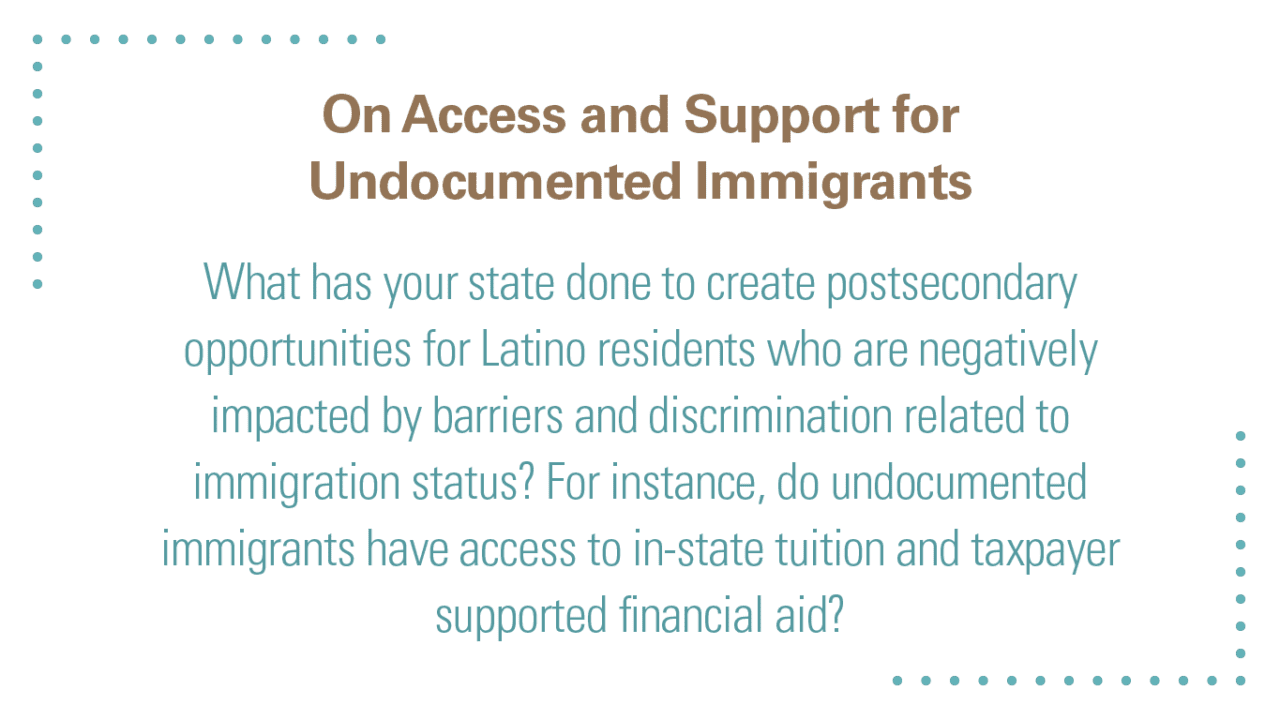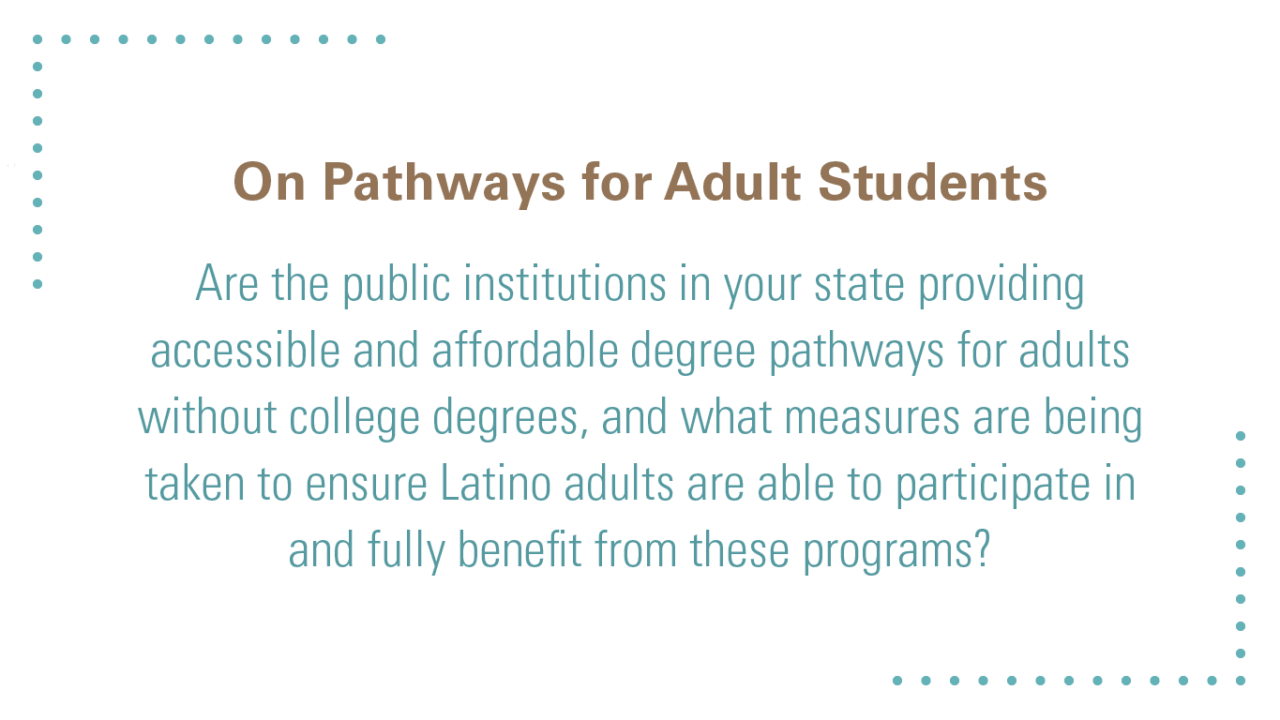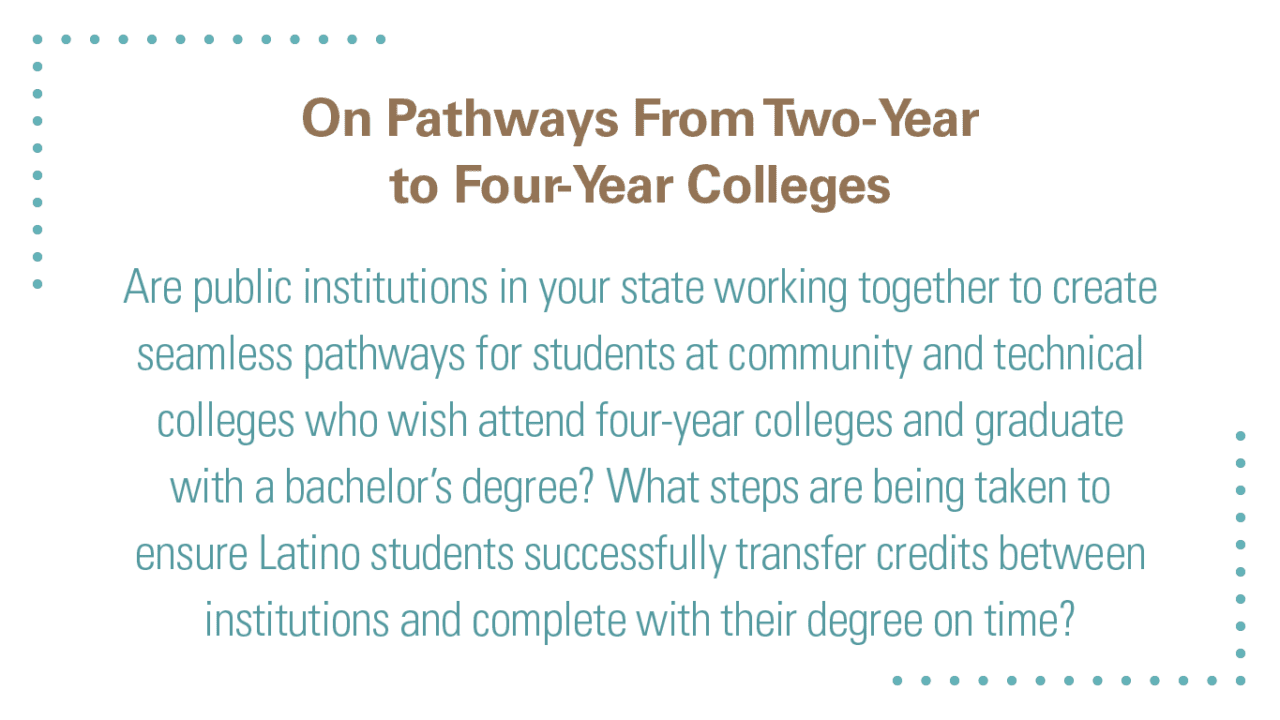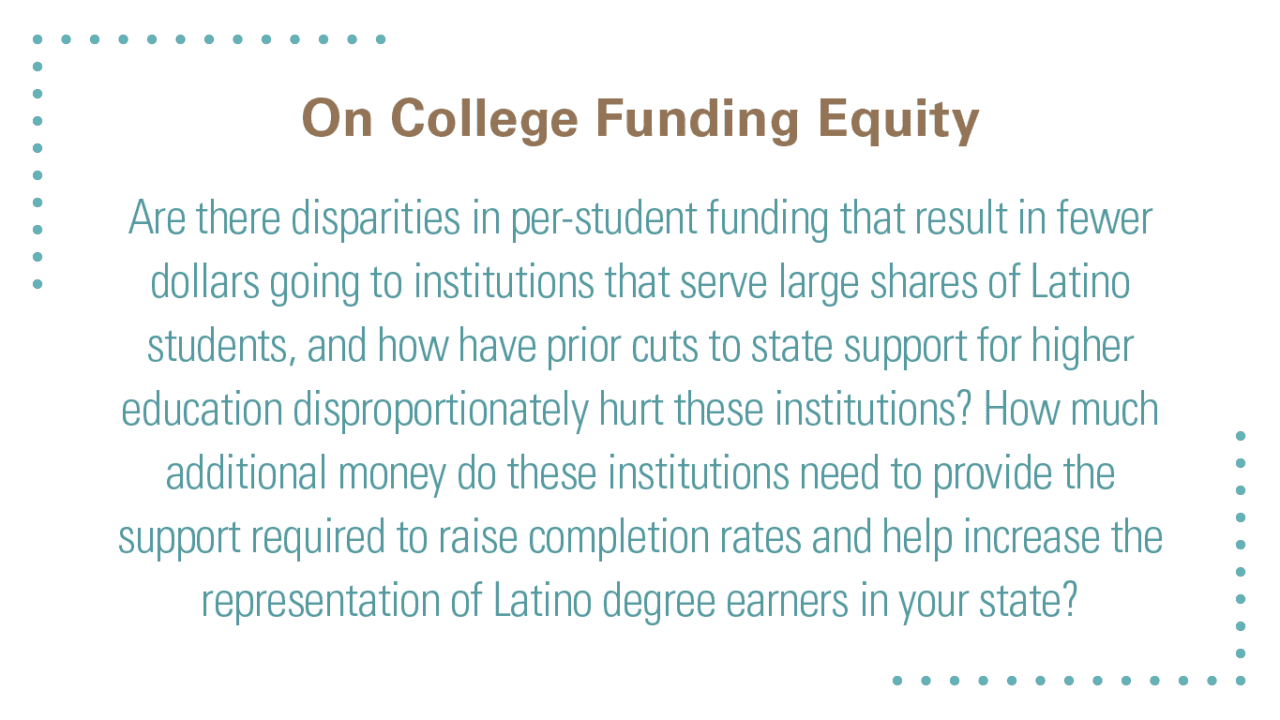Broken Mirrors: Latino Representation at Public Colleges
Latino Student Representation at Public State Colleges and Universities
As tax-exempt, taxpayer-supported entities, U.S. public colleges and universities should advance the public interest by ensuring all U.S. residents – regardless of race or ethnicity – have a legitimate opportunity to earn a college education.
When it comes to enrolling and graduating Latinos, and at a time when the population of Latinos in the U.S. is fast increasing, public colleges and universities in most states are flunking. In nearly every state, Latinos are neither getting their fair share of seats on public campuses nor receiving their fair share of college degrees when compared with state demographics and with their White peers.
“A college degree is the surest path to the middle class. The fact that Latinos don’t have equitable access to college classes or a college degree means millions of Latinos are missing out on the best chance to move their families into the middle class. This isn’t just damaging to Latinos. This systemic inequality threatens our democracy and our economy. It’s time for state leaders to act.”
– Wil Del Pilar, Vice President of Higher Education at The Education Trust
This next report in our Broken Mirrors series, Latino Student Representation at Public State Colleges and Universities, details how much work states have to do to increase the population of Latinos with a college degree, from enrolling proportional numbers of Latinos in community colleges and four-year colleges and universities to ensuring Latinos are just as likely as their White peers to cross the finish line once they start college.
Earlier Ed Trust research on the State of Higher Education Equity showed that Black and Latino adults are less likely to hold a college degree today than White adults were in 1990. The first report in our Broken Mirrors series exposed the systemic underrepresentation of Black students and graduates in public colleges and universities. In this second report of the series, Latino Student Representation at Public State Colleges and Universities, Ed Trust analyzed publicly available census and federal higher education data to determine how well Latino residents are represented in public community and technical colleges and in public four-year colleges and universities.
High-Level Findings
- Latino students are underrepresented at public colleges and universities, especially at community and technical colleges, in the vast majority of states.
- The states with the largest Latino populations fail to provide Latino students with the same access to selective public four-year institutions as their White peers.
- In all 44 of the states we examined, Latinos are underrepresented among associate and bachelor’s degree earners.
- A smaller share of Latino graduates received a bachelor’s degree compared to their White peers in most states.
- On a more positive note, several states with sizable Latino populations are close to meeting Ed Trust’s equity benchmarks.
How does your state stack up?
Find out with our State Equity Report Card
Ed Trust urges states to take immediate action on at least four fronts:
- setting race and ethnicity targets in statewide college degree attainment goals,
- rewarding public colleges and universities for enrolling and graduating students of color,
- ensuring residents with some college but no degree are eligible for need-based aid programs, and
- investing in community college programs that help Latino residents earn high school equivalency credentials and get on a pathway to higher education.
Higher education is supposed to be a great equalizer, but it has instead compounded racial inequities. State and institutional leaders must commit to addressing systemic racism and barriers throughout the educational pipeline to ensure that more Latino students are getting to and through college.

